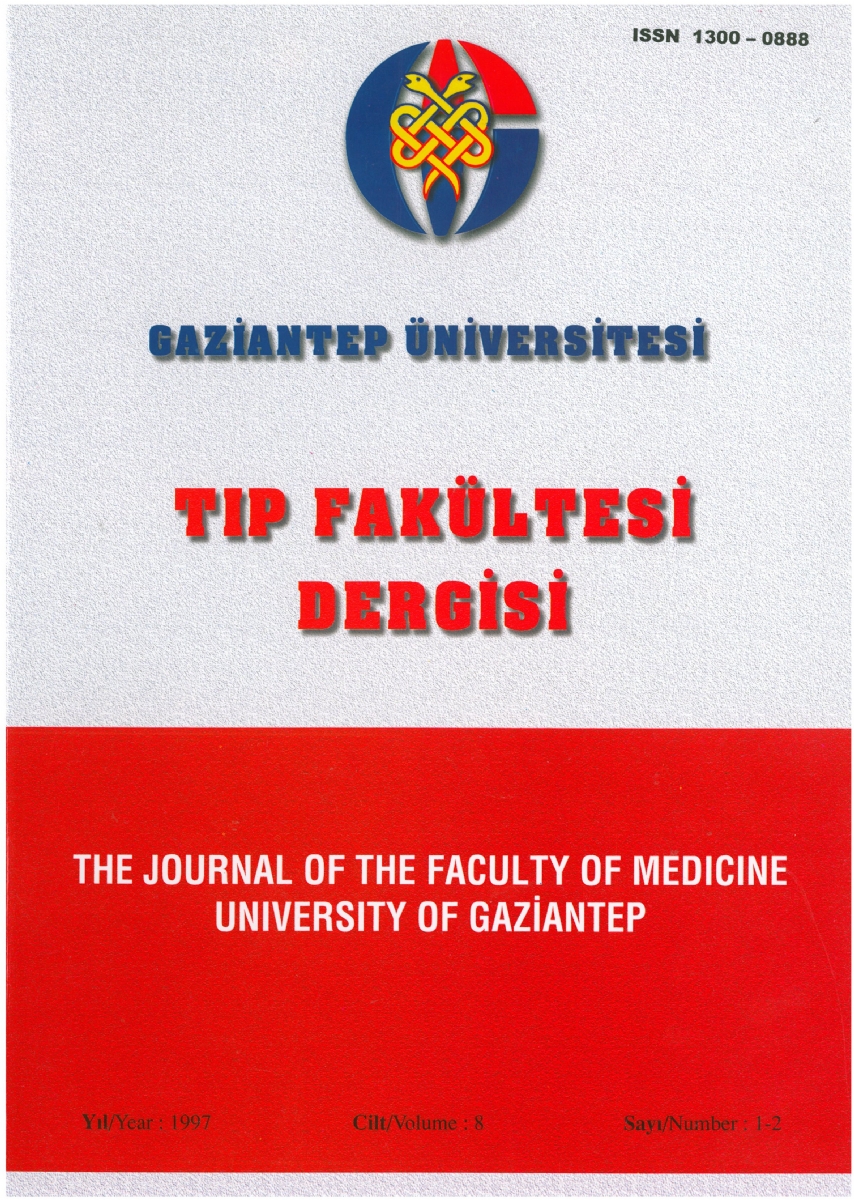Resistance to Three Different Antibiotic Groups Microorganisms Causing Urinary Tract Infectionsüriner
DOI:
https://doi.org/10.58600/eurjther.1997-8-1-2-1497-archKeywords:
Uropathogens, antibiotic resistanceAbstract
Microorganisms caused urinary tract infectious investigated their resistance againts three different antibiotic groups: The urine cultures of two differents patients groups with urinary tract infections were examined retrospectively. The isoleted uropathogens were studied with respect to their resistance againts three different antibiotic groups. The first groups consist of the 300 in-patients at the university hospital and the second group of 225 out-patients who have applied to a privately owned laboratory were suspected of urinary tract infection. The isolated uropathogens from their urine cultures were placed on antibiogram by the Kirby-Bauer disc dif.fusion method and were subsequently examined for their resistance againts the quinilon, anıinoglikosid and third group cepholosporins . A total of 79 uropathogens from the first group, and 81 from the second group were isolated. The strongest determiner was found tobe E.coli, and staphilococcus in both groups. The resistance between the two groups of Jour celi chi-square . Far E.coli and proteus spp. resistance in aminoglikosids for the second grous was found to be statistically significant (p<0.0005). Uropathogens isolated at the private laboratory were found to be more resistance against aminoglikosid and third group cephalosporins.
Metrics
References
Walter E, Stawn MD and TM Hooton: Current concepts managements of urinary tract infection in adults. The New Eng J Med. 1993, 28 vol.329, p.1328
John W Warren: Nosocomial urinary tract infections; Mandell-Douglas and Ben nett's; Principles and Practice of lnfec tious Diseases (fourth ed). Churchill Li vingstone 1995 ,pr. U.S.Ap.2607
Anthony J, Schaeffer MD: Urinary tract infections; Cystitis and pyelonephritis; Schulman-Phair Sommons The Biologic and Clinical Basis of lnfectious Diseases (4th ed.) WB. Saunders Company Mexico 1992 p.221
Cox CE: Nosocomial urinary tract infec tious. Urology 32:210, 1988
Platt R, Polk BF, Murdock B et al: Risk factors far nosocomial urinary tract in fections. Am J Epidemiol 124:977, 1986
Aydın D, Büyükbaba Ö, Anğ Ö: İdrar yolu enfeksiyon etkeni enterobacteriaeeae suş larında kinilon duyarlılığı. ANKEM 1995 cilt lO,sayı 1,p.19
Akbaş E, Levent B, Dalkılıç L, Güvener E: Üriner sistem örneklerinde hastane kaynaklı ve toplum kaynaklı mikroorganizmaların dağılımı ; KLİMİK Dergisi 1994 ,cilt 7, sayı 2 p.32
Öztürkeri H, Kocabeyoğlu Ü, Yenen OŞ, Keskin K: Distribution of coagulase nega tive Staphylococci including the newly described species Staphylococcus schleife ri in nosocomial and community acquired urinary tract infections Eur J Clin Microbiol lnfect Dis 13:1076, 1994
WEugene Sanders :Urinary tract system infection , Hospital Practice 1994 March suppl. 5 vol 26, p.1306
Özsüt H: Komplike üriner sistem enfek siyon hastalıkları ANKEM, cilt 9, sayı 3, p.252, 1995
Kumada Y:Comparison of complicated urinary tacı infections in men and women , lnfection, 22 suppl, 55-58, 1994
Dökmetaş İ, Bakır M, Yalçın N ve drk: Hastanede gelişen üriner sistem enfek siyonlarında predispozan faktörler, kliniklere göre dağılım etkenleri ve bazı antibiyotiklere duyarlılık durumu; AN KEM Dergisi 1 995 sayı 9, Na;1 p. 38- 42.
Walter E, Stawn MD: Guidelines far prevention of catheter associated urinary tract infection Ann of Internal Med, March 82: 386, 1975
Downloads
Published
How to Cite
Issue
Section
License
Copyright (c) 2023 European Journal of Therapeutics

This work is licensed under a Creative Commons Attribution-NonCommercial 4.0 International License.
The content of this journal is licensed under a Creative Commons Attribution-NonCommercial 4.0 International License.


















